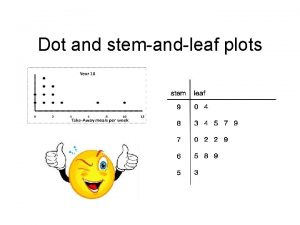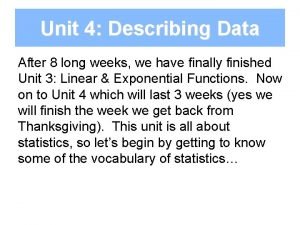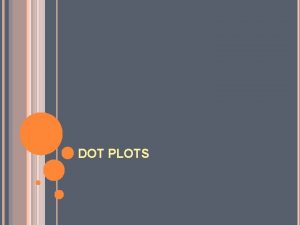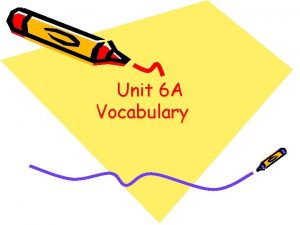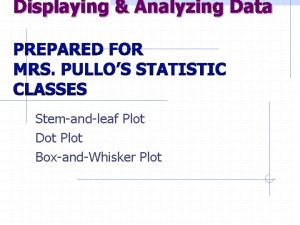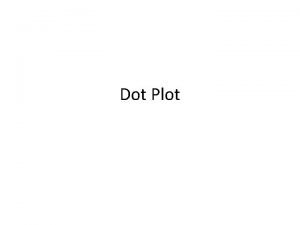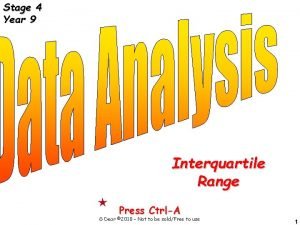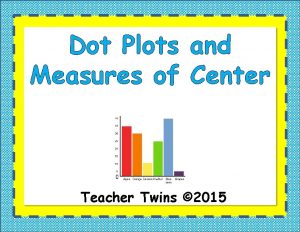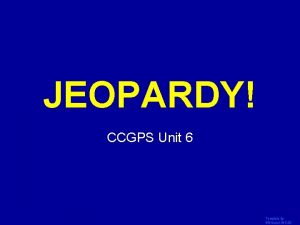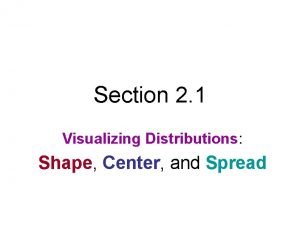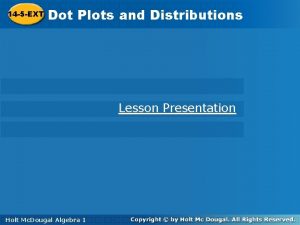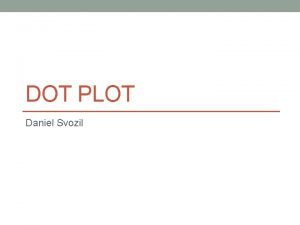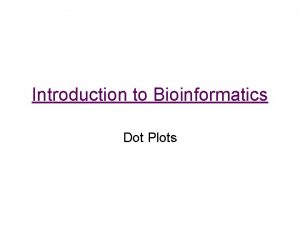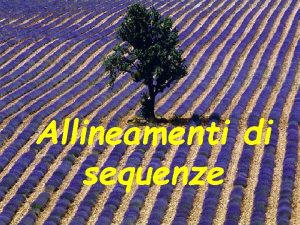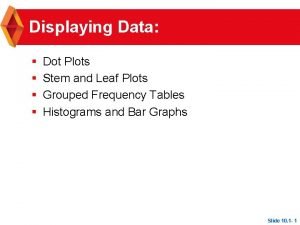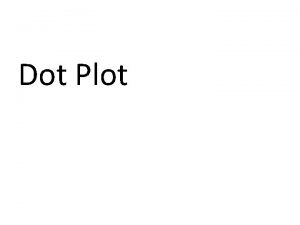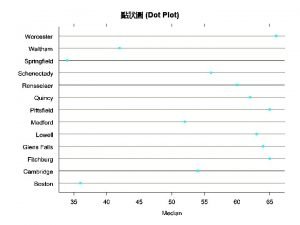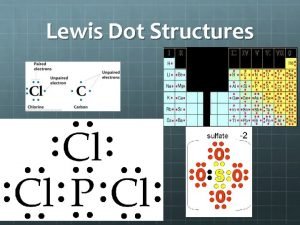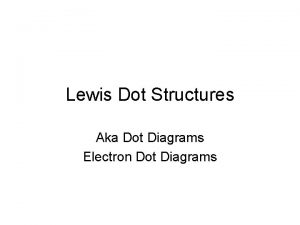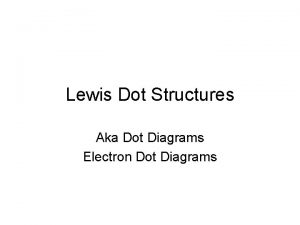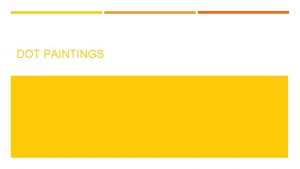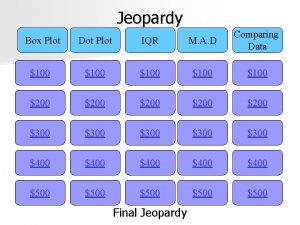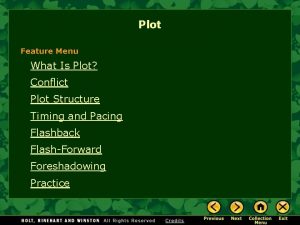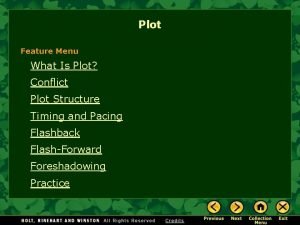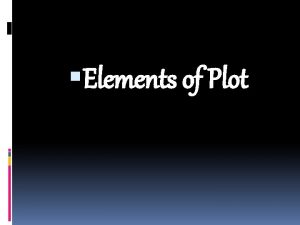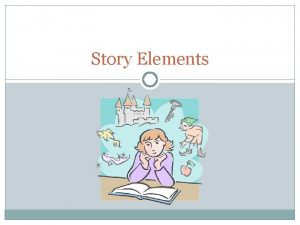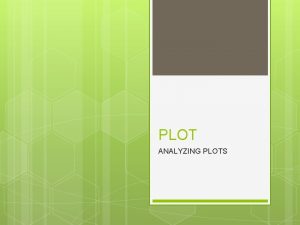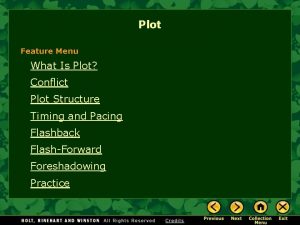Dot Plot Dot Plot Goal We will take

























- Slides: 25

Dot Plot

Dot Plot

Goal • We will take two nucleotide base strings and look for common patterns – stretches where the bases match. • GAATTCATACCAGATCACCGAAAACTGTCCTCCA AATGTGTCCCCCTCACACTCCCAAAT • TCGCGGGCTTCTGCTCTTAGACCACTCTACCCTA TTCCCCACACTCACCGGAGCCAAAGC

Start by entering the two sequences in question in Excel

Use the LEN Function to determine the length of the string

Set up a grid – mine was 60 -by-60 since the lengths were 60

Enter the length of match one is seeking – start with 1

Enter the formula to look for matches

Anatomy of the formula (Part 1) • =IF(MID($B$1, E$3, $B$4)=MID($B$2, $D 4, $B$4), 1, 0) • Recall MID takes a string $B$1 is the first base sequence and $B$2 is the second base sequence • Then MID takes a part of the string beginning at the “second argument”

Anatomy of the formula (Part 2) • =IF(MID($B$1, E$3, $B$4)=MID($B$2, $D 4, $B$4), 1, 0) • The starting point varies. • E$3 stays in the third row as the formula is copied and uses the various numbers 1 through 60 set up in row 3. • $D 4 stays in column D and uses the various numbers 1 through 60 set up in column D.

Anatomy of the formula (Part 3) • The third argument is the length of the match we seek. They are both the same length. • If the two “substrings” (base mini sequences) match, output a 1, otherwise a zero. • Then copy the formula throughout the grid.

With formula copied

Next add some conditional formatting rules

Result of Conditional Formatting

We are we looking for? • In dot plots, one looks for dots (for us colored cells) along diagonals. • A “long” diagonal means that the mini base sequences within the longer sequence match.

Change the length to eliminate some of the “noise”

Increasing the length of the substring match

Question • What is the longest match between these two sequences?

Problem • We are looking for diagonal matches; however, increasing the length of the match only allows only one of the two diagonal types to survive.

New Sheet: Enter one string and also make column of descending numbers

Enter formula that takes one letter at designated position

Use the concatenate formula to create the reversed string

Use Copy/Paste Special/Values to enter reversed string

Repeat the analysis looking for matches between one original and one reversed string

Question • What is the longest match between these: one of the original sequences and one of the reversed sequences?
 192 dot 168 dot 1 dot 1
192 dot 168 dot 1 dot 1 Take a bus or take a train
Take a bus or take a train 1-5 solving inequalities
1-5 solving inequalities Java vs dot net
Java vs dot net Dot plot vs stem and leaf
Dot plot vs stem and leaf Dot plot advantages
Dot plot advantages Definition of dot plot
Definition of dot plot Box plot vocabulary
Box plot vocabulary The double box plot shows the test scores
The double box plot shows the test scores Dot plot
Dot plot Dot
Dot Teacher twins@2015
Teacher twins@2015 Mean median mode jeopardy
Mean median mode jeopardy Dot plot minitab
Dot plot minitab Uniform dot plot
Uniform dot plot Dot plot betekenis
Dot plot betekenis What is a uniform distribution dot plot
What is a uniform distribution dot plot Dna dot plot
Dna dot plot Dot plot
Dot plot Dot plot bioinformatics example
Dot plot bioinformatics example Matrici pam
Matrici pam What is a cluster on a dot plot
What is a cluster on a dot plot Plot diagram
Plot diagram Merchant of venice resolution
Merchant of venice resolution Exposition examples
Exposition examples The merchant of venice plot
The merchant of venice plot




